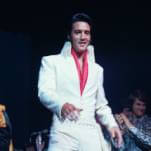Readers remember the influence and accomplishments of Satoru Iwata
In Memoriam
Sunday night, the news broke that Satoru Iwata, Nintendo’s president and CEO, had died. It was a shocking and sudden loss. Aside from confirmation in 2014 that his doctor had ordered Iwata not to travel to E3, Nintendo hadn’t discussed its president’s health. (He also watched E3 2015 from Japan; however, no mention of his health was made.) Throughout the week, fans, friends, and colleagues have been publishing moving tributes to Iwata, a man whose influence on Nintendo and the entire video game industry is difficult to overstate. But he also had so many lesser known accomplishments and contributions throughout his career. Down in the comments of our obituary, Occam’s Blazer found a great way to describe Iwata and that storied career:
The sum of Iwata’s accomplishments as a programmer and president seem like a whole bunch of urban legends. He programmed the compression of Pokémon Gold and Silver so well that it could not only fit the Johto region but also all of Kanto brought over from the original games. He helped Masahiro Sakurai create Super Smash Bros., even though Shigeru Miyamoto initially shot down the idea of using Nintendo characters, and Iwata stepped in to debug Super Smash Bros. Melee so it could be released on time. He essentially saved EarthBound by himself. And of course, as president, he gambled much of Nintendo’s future on the Wii and succeeded. To be an integral part in creating and overseeing so many damn games is incredible.
That’s not to say his time with Nintendo was perfect. However, I think the way Iwata and Nintendo responded to failures will be one of the greatest parts of his legacy. He did not immediately panic or ax less successful consoles, like the GameCube and Wii U. He was able to guide Nintendo with a balance of trying new ideas while maintaining company ethos, even if it meant taking some risks and making mistakes. Iwata was a rare corporate officer who showed some patience and restraint when things weren’t going well, as well as showing some accountability by taking a pay cut when Nintendo was financially struggling a few years ago. He did the almost impossible: being a charismatic president of a huge corporation. Above all, Satoru Iwata was a fun, joyful, and unassuming person and one hell of a programmer.
Jakeoti talked about statements from Iwata’s coworkers and those Nintendo Directs, another Nintendo innovation in which Iwata played a key role and starred:
Iwata was an incredible man, and, while it upset me to see the news, I quickly became even more emotional seeing other people’s responses, especially from his coworkers. Shigesato Itoi, creator of EarthBound, promising that they would see each other again and Masahiro Sakurai saying that he would go into work as normal because it’s what Iwata would have wanted were especially powerful.
But in the end, I know that what will ultimately hurt the most will be the Nintendo Directs. Seeing a man who is in charge of this powerful company pretending to Dragonball-style fight his coworkers, earnestly talk about how much he’s enjoying games, wearing costumes, apologize when things weren’t going well—it all felt so sincere. It didn’t feel like he was trying to sell us on the products, even though that was technically the job of the Directs. It felt more like he was enjoying them and wanted us to enjoy them just as much.
Skull Kid addressed another of Iwata’s attempts at making Nintendo’s history and creative process more transparent:
I can’t say enough good things about Iwata Asks, which were just about my favorite game-related things to read. Until they started, there were very few in-depth interviews about the development of Nintendo’s games outside of Nintendo Power previews and stuff, all of which are pretty shallow. I’ve tried doing research on some of their classic games, and it’s shocking how little information there is. If you want to find out about the production of The Godfather, you could spend months before you read everything. If you want to read about the development of Ocarina Of Time, you really have to dig. Iwata was clearly interested in changing that.
And NoKibitzing summed everything up perfectly:





![HBO teases new Euphoria, Larry David, and much more in 2026 sizzle reel [Updated]](https://img.pastemagazine.com/wp-content/avuploads/2025/12/12100344/MixCollage-12-Dec-2025-09-56-AM-9137.jpg)


































